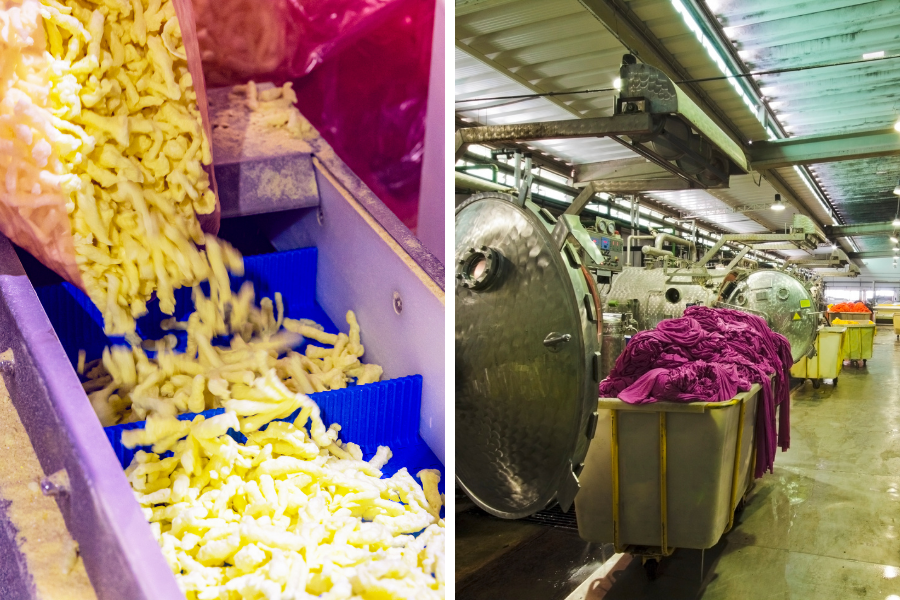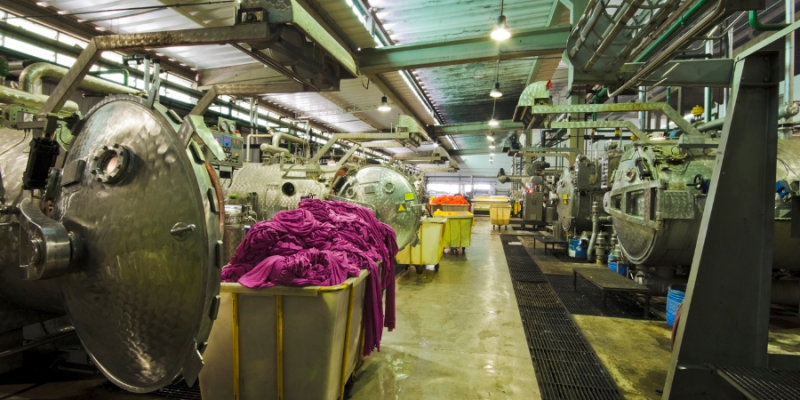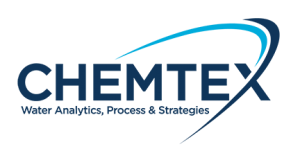
Wastewater Treatment for Food Processing Facilities and Laundries
While food processing and laundry seem like pretty benign industrial activities, they can actually be very challenging from a wastewater treatment perspective.
Food Processing Facilities
Food manufacturing facilities can range from fairly simple, small operations to large and complex enterprises. Fats, oils, cleaning products, organic matter, and potentially disease-bearing components, such as blood from a meat processing facility, can all be components of the waste and need to be individually addressed.
Often several different processing technologies are applied to address the constituents which make-up of the effluent water being treated. The effluent water can have high biochemical and chemical oxygen demands because it may contain organic carbon, nitrogenous organics, inorganics, large quantities of nutrients, and/or suspended and dissolved solids.
As a result, the proper treatment can require one or more processes for complete removal of contaminants. This may include screening, secondary settling, filtration, anaerobic and aerobic digesters, aeration, and disinfection.
It can also require FOG separation in a DAF. FOG is an acronym for fat, oil and grease. DAF is short for dissolved air flotation, a water treatment process that clarifies wastewaters by removing suspended matter such as oil or solids. This is achieved by dissolving air in the wastewater under pressure and then releasing the air at atmospheric pressure in a flotation tank basin.

Laundry Facilities
Industrial laundry facilities clean many things; these are not only cleaning shirts and pants. They are cleaning fabrics and material used in industry. As a result they have very “dirty” water leaving the cleaning process. Contaminants from these waste streams may include heavy metals, emulsified oils and greases, sand/dirt/grit, lint, and volatile organic carbons (VOCs).
One common byproduct of industrial laundry activities is chemical emulsions. These often result when surfactant chemicals such as soaps, detergents or high pH cleaners are used. The surfactant chemicals impede the natural tendency of oil droplets to reunite or coalesce, and instead create a stabilized emulsion. The surfactants allow the cleaner to clean and solubilize the things they are cleaning. Generally, an emulsion-breaking chemistry is the necessary remedy, because chemical emulsions seldom separate by themselves.
Removing foulants from the laundry industry waste can require a variety of physical processes including screening, sludge dewatering, and filtration. It can also require chemical processes such as emulsion cracking or pH adjustment; pH adjustment with coagulation and eventual precipitation; and flocculation, often through a DAF. Emulsion cracking is essentially the reversal of emulsion by altering the pH with caustic components, acid components and coagulants. Flocculation is chemically destabilizing particles and thereby causing them to aggregate into a clump, also known as a floc.
Chemtex has experience with wastewater treatment in a variety of industrial food processing and laundry contexts. Please contact your International Chemtex representative, who will tailor your wastewater treatment to best fit your specific needs. In many cases a plant survey and jar test study can help us determine the best course of action, as well as any potential for cost savings. We look forward to helping you with your wastewater treatment needs!



/NQA-ISO-9001-Logo-ANAB.jpg)